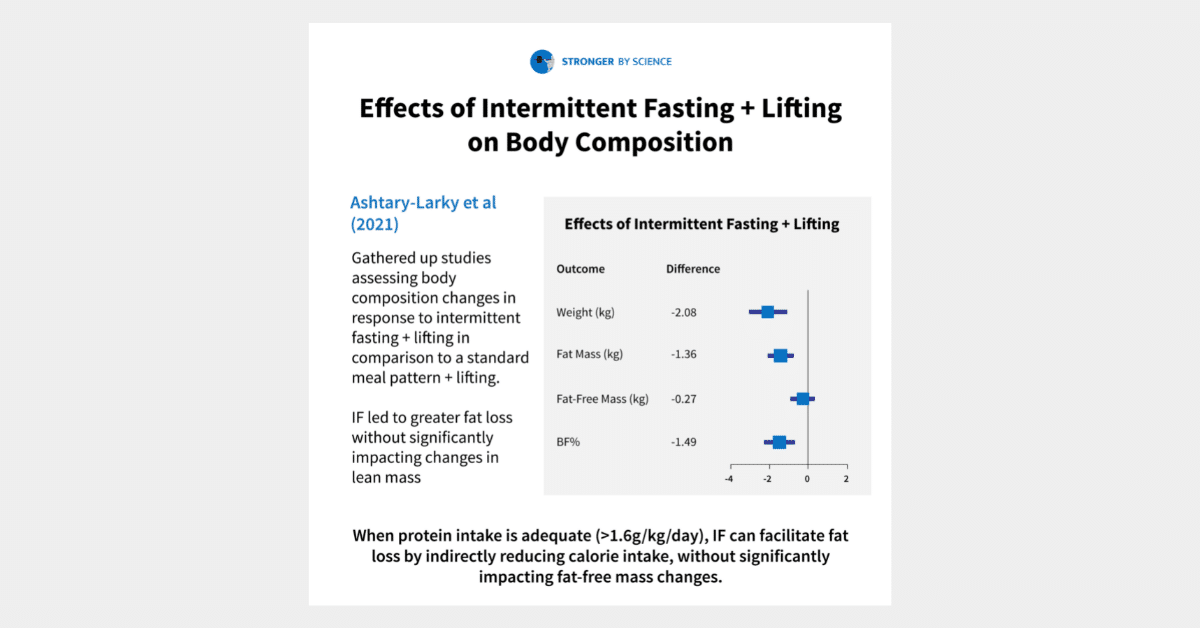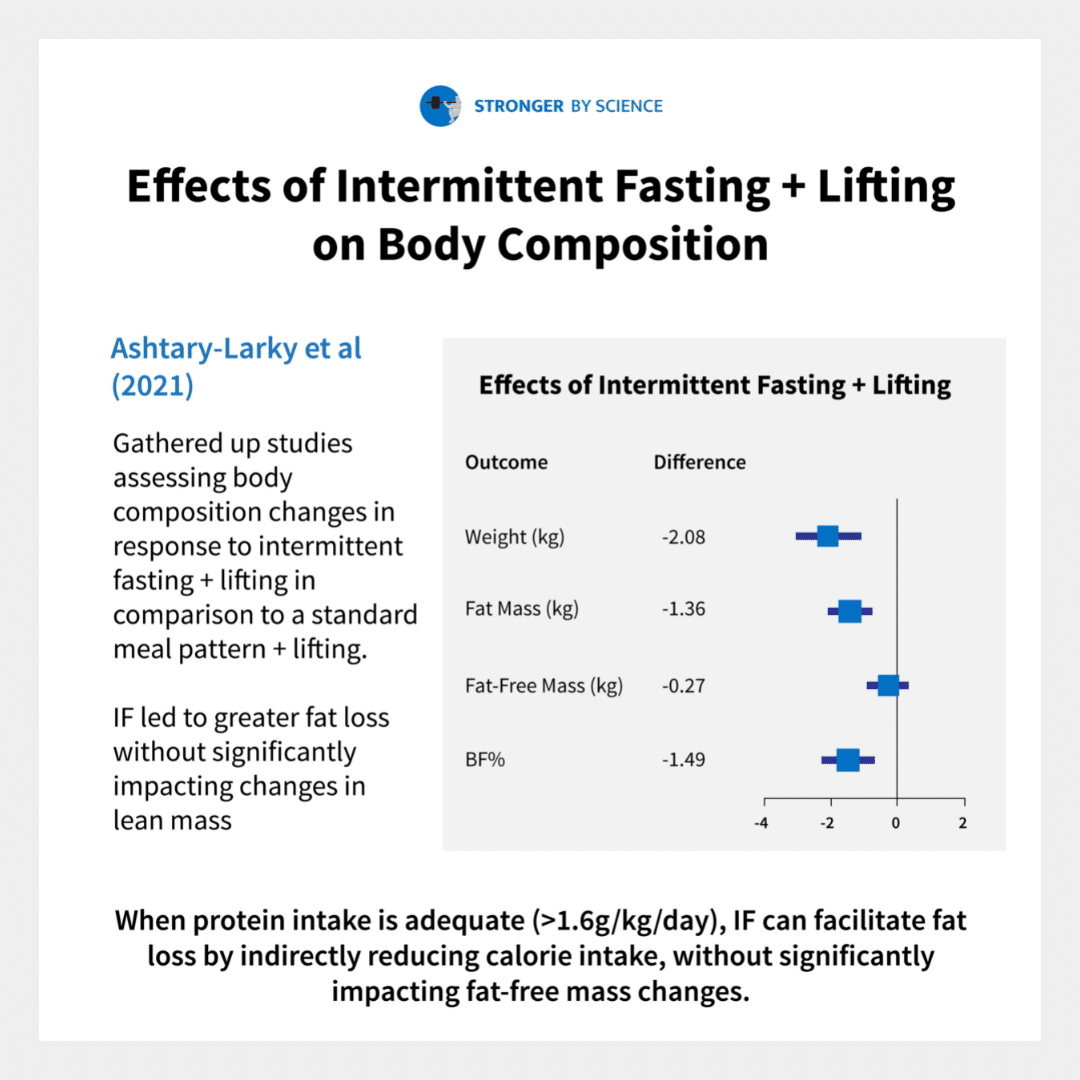For a long time, there was widespread belief that eating every couple of hours was important for fitness-oriented goals.
That sentiment has not only subsided, but in some ways reversed, as various types of fasting are currently being promoted for purported health and fitness benefits. Intermittent fasting can be used as a broad umbrella term that describes a variety of different fasting strategies, including alternate day fasting, 5:2 fasting, and time-restricted feeding, among others.
In the fitness world, 16:8 time-restricted feeding has become particularly popular, with many dieters adopting a 16-hour fasting window with an 8-hour daily feeding window.
This meta-analysis gathered up a bunch of studies assessing body composition changes in response to intermittent fasting strategies + lifting in comparison to a standard meal pattern + lifting.
Results indicated that intermittent fasting strategies led to greater weight loss and fat loss (presumably by indirectly reducing calorie intake), without negatively impacting lean mass.
If we look closely at the studies that specifically include young, healthy, active participants completing pretty rigorous training programs, a notable pattern emerges: time-restricted feeding with an 8-hour feeding window is fine for supporting gains in strength and hypertrophy, as long as protein is high enough.
If protein drops below 1.6g/kg, lean mass can be threatened (Tinsley 2017), but intakes at or above 1.6g/kg seem to be very suitable for time-restricted feeding (Moro 2016, Tinsley 2019, Stratton 2020).
Until I see more direct evidence looking at more intensive fasting protocols like 5:2 fasting or alternate-day fasting (or even more extreme fasting protocols), I maintain skepticism that they are optimal strategies for lifters focused on strength and hypertrophy.
However, time-restricted feeding with an 8-hour feeding window can offer lifters an opportunity to train in a sufficiently fed state and consume 3 large boluses of protein throughout their feeding window, and longitudinal results from previous studies suggest that 16:8 time-restricted feeding is a totally viable option for lifters.





